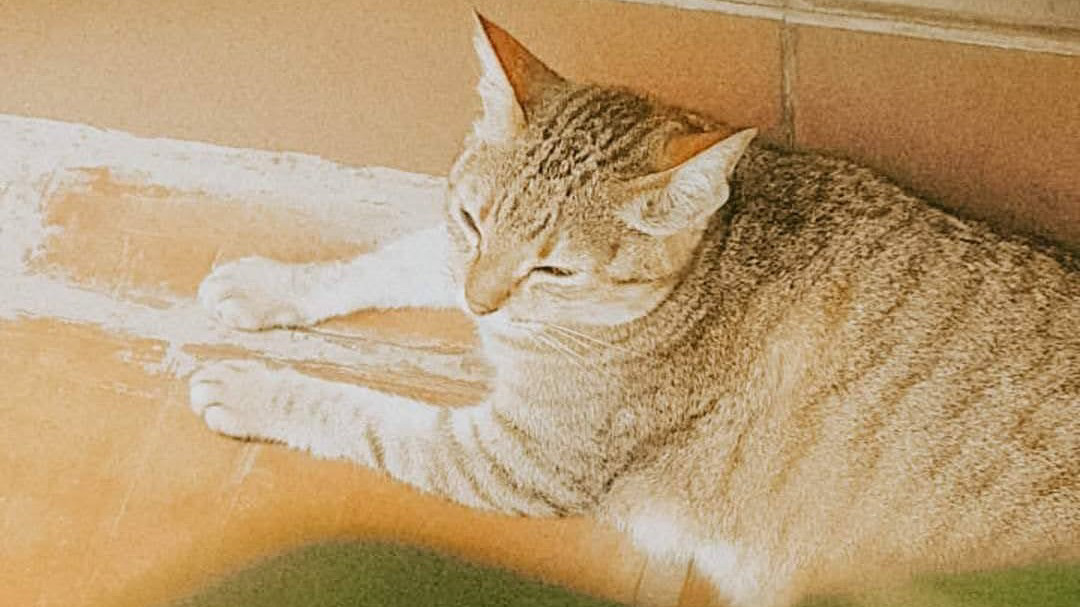A large hermit crab. Photo: Tran Nhat Lam Thuy
"What were two points from this week's reading that stood out to you as particularly important and/or interesting?"
"Why so?"
(Gitelman 2008)
I find the difference between the history of scientific and nonscientific objects particularly interesting, as Gitleman (2008) explained how art in the past is still considered art today while science in the past is not considered science in recent times. She then explained how media remained meaningful even when it is old, yet it does not "seem right anymore, except as a throwback" (Gitleman 2008) as old media struggle with representation.
Another point I would like like to bring up is how "all media were once new as well as the assumption" (Gitleman 2008). While companies can reach a wide audience using old media, new media, such as pay-per-click advertisements on social media give businesses the opportunity to target a more limited but focused target audience (SEO Design Chicago n.d.). But old media are the same as new media in terms of importance (JournoLink n.d.).
Word count: 141
~#~
A snail. Photo: Tran Nhat Lam Thuy
"Do we want media to disappear? Why/Why not?"
While there are benefits, they cannot outweigh the drawbacks of the disappearance of media because Jenkins (cited in Lynch 2022) argued that people have always used new technologies as a way to participate in society, engage with the outside world, and improve their local communities. In addition, "culture precedes the technology but technology amplifies the trends of the culture and makes them available to a much larger segment of the population" (Jenkins, cited in Lynch 2022).
~#~
"When is realism not the goal of particular media texts (give specific examples)"
For specific media texts where the goal is to convey messages (i.e. caricatures and cartoons), realism is not seen as a goal, it is even considered unnecessary as "salient or recognizable characteristics of the subject are seized upon and exaggerated" either for satirical purposes or to convey a message. Even though caricatures reflect the real world like realism in films (ma8ttc n.d.), the details are too exaggerated to be seen as realistic.
(Labbé et al. 2022)
~#~
"In your own words, describe what is meant by media convergence"
The theory of media convergence states that all major mass media will eventually converge into a single medium. The research theme of "Media Convergence" typically refers to the entire production, distribution, and use process of future digital media services, from content production to service delivery through various channels like mobile terminals, digital TV, or the Internet (Chakaveh & Bogen 2007).
~#~
"What are some specific examples of converged media that you have engaged with lately? Be sure to note how they demonstrate convergence (i.e. what media forms/technologies do they merge?)"
(Burrell 2022)
My smartphone is an example of technologically converged media with which I interact on a daily basis. It combines different media, such as print media (e-books, news apps), broadcast media (streaming websites, radio, music apps), and new media (the internet), into a single device that can perform a variety of tasks, from calling and texting to photography, videography, gaming, and much more (Team Leverage Edu 2021). The same thing can be said about computers, laptops, and tablets. Another example of converged media is Facebook. While it does not merge as many media forms/technologies as it is an application that can be found on a smartphone, Facebook still converges various media like streaming platforms, the internet, and many more.
Word count: 327
~#~
Reference list:
'Always already new media, history, and the data of culture' [book cover], in Gitelman, L 2008, Always already new media, history, and the data of culture, MIT Press, Cambridge, Massachusetts, viewed 4 January 2023.
Chakaveh, S & Bogen, M 2007, ‘Media convergence, an introduction’, Lecture Notes in Computer Science, pp. 811-814.
'[COVID Keep Up caricature]' [image], in Labbé, F et al. 2022, 'Stigma and blame related to COVID-19 pandemic: A case-study of editorial cartoons in Canada', Social Science & Medicine, vol. 296, viewed 4 January 2023, <https://ars.els-cdn.com/content/image/1-s2.0-S0277953622001095-gr6.jpg>.
Gitelman, L 2008, Always already new media, history, and the data of culture, MIT Press, Cambridge, Massachusetts.
'[Images of smartphones]' [image], in Burrell, H 2022, The best smartphone 2022, Tech Advisor, viewed 4 January 2023, <https://www.techadvisor.com/wp-content/uploads/2022/06/best_smartphone_apr_2022_hero.jpg?quality=50&strip=all&w=1024>.
JournoLink n.d., 5 reasons why old media is as important as new media, JournoLink, viewed 19 November 2022, <https://journolink.com/resources/post/332-why-old-media-is-as-important-as-new-media>.
Lynch, A 2022, ‘Lecture 9: How media changes’, MDA10001 Introduction to media studies, Learning materials via Canvas, Swinburne University of Technology, 24 March, viewed 23 November 2022.
Ma8ttc n.d., What is realism in film: the essential guide, Film Making Lifestyle, viewed 22 November 2022, <https://filmlifestyle.com/what-is-realism-in-film/>.
Team Leverage Edu 2021, Media convergence, LeverageEdu.com, viewed 23 November 2022, <https://leverageedu.com/blog/media-convergence/>.
SEO Design Chicago n.d., Traditional media vs. new media, SEO Design Chicago, viewed 19 November 2022, <https://seodesignchicago.com/marketing/traditional-media-vs-new-media/>.








